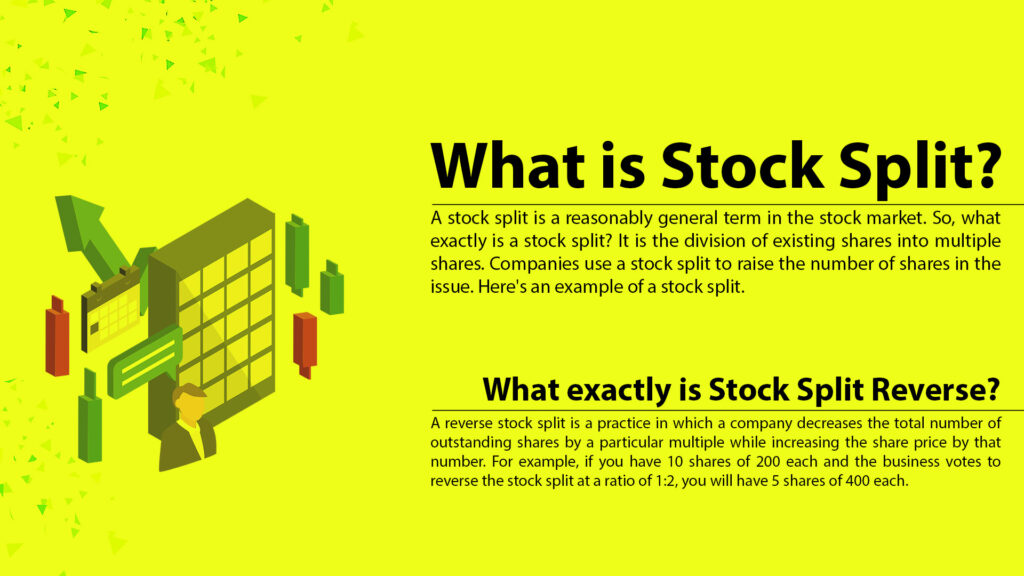A stock split is a reasonably general term in the stock market. So, what exactly is a stock split? It is the division of existing shares into multiple shares. Companies use a stock split to raise the number of shares in the issue. Here’s an example of a stock split.
For example, if the firm whose shares you own decides to do a 10-for-1 stock split, you will receive ten shares for each you own. So, if the company had 10,000 outstanding shares before the split, it will now have 100,000 outstanding shares. However, the company’s market valuation would stay unchanged.
The Impact of a Stock Split
Now that the splitting’s meaning and rationale are evident, let’s look at its consequences. The amount of stocks in your portfolio of a specific company is multiplied by the stock split ratio. Earnings per share are affected by the split ratio. For example, if the split ratio is 2:1, earnings per share are reduced by half.
However, keep in mind that the total earnings in your investment for the number of shares you own before and after the split will remain the same.
Why is there a need for stock spills?
Now that you understand the definition and impact of a stock split, let us look at the reasons for stock splits:
Raise Liquidity
This is one of the main reasons for the stock split. Often, a company’s share price is simply too high for people to invest in, and any additional rise in pricing may discourage them from investing. The shares are made available to all by decreasing the value of a share through a split.
Increase the number of stockholders
With a stock split, the amount of shares outstanding of a company grows, giving more investors the choice to purchase shares. This helps a company’s investor base grow.
Future Growth Expectations
Stock splits are seen as a sign that a company is growing. Investors generally believe that if a firm goes through a stock split, it has expansion plans for expansion, and this idea generates a favourable image of the company in the market.
Benefits of Stock Split
One of the key benefits of stock splitting is that it can result in high returns. A share split may enhance the price of a stock as a sign of improved performance. According to research, stocks that have been divided have become advantageous for investors.
What exactly is Stock Split Reverse?
A reverse stock split is a practice in which a company decreases the total number of outstanding shares by a particular multiple while increasing the share price by that number. For example, if you have 10 shares of 200 each and the business votes to reverse the stock split at a ratio of 1:2, you will have 5 shares of 400 each.






